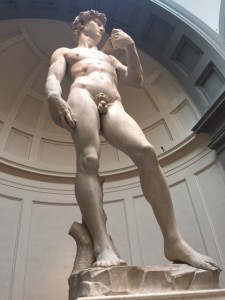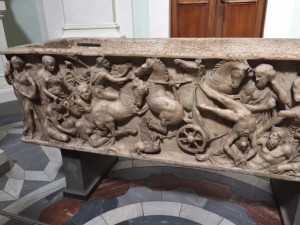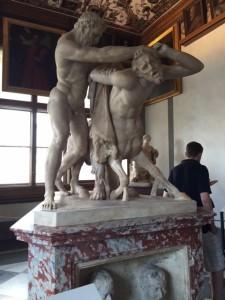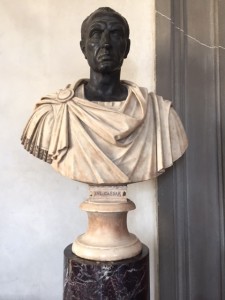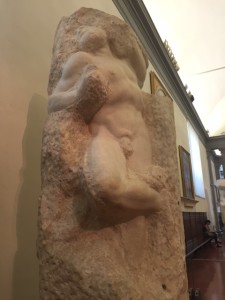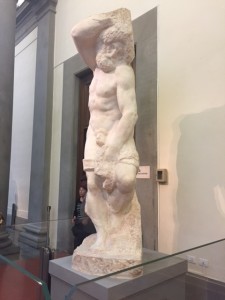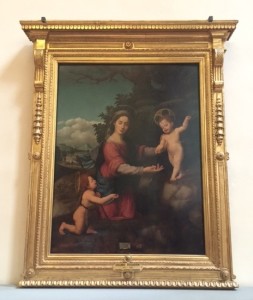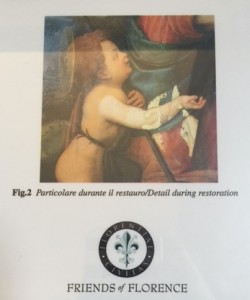The David Statue at the Academia Museum in Florence: the intense focus in his eyes, the veins and muscles protruding in his oversized hands, the softness of his white marble skin. It appears as if he is about to leap into motion. Our admiration of the David statue (among many other Florentine works of art) would not be possible without the non-profit organization, Friends of Florence.
Friends of Florence is a group dedicated to the restoration and preservation of Florentine culture, art and history. They provide financial support to Florence’s restoration laboratories to refurbish artwork such as paintings, sculptures and architectural elements. As a stone restoration specialist, I’m a big fan of this idea.
Over the years, Italian artwork has been exposed to water damage from floods, earthquakes, political upheaval, pollution and just plain old time. I had never heard of this group until my recent trips to the Uffizi and Academia. As I entered the Uffizi Gallery, I noticed a small plaque, thanking Friends of Florence for its continued support in the preservation of art history. My interest was peaked!
The corridors of the Uffizi house classical marble sculptures and busts, which were owned by the Medici family at the Pitti Palace. The Medici acquired many of these works from the Roman antiquity markets. Many of these statues would not be featured today in the Uffizi if it were not for Friends of Florence.
Here were my favorite restored marble pieces at the Uffizi Gallery:
Ancient marble basin
Hercules and Nessus
Bust of Giulio Cesare
After our feet recovered from our long tour at the Uffizi, our next museum trip was to the Academia.
We all know the David is the most famous statue at this museum, so I’m going to focus on some of the smaller pieces, the four prisoners: Atlas, the Bearded Slave, Awakening Slave and the Young Slave (all restored since 2004).
These four statues by Michelangelo were meant for St. Peter’s Basilica. After years of delays and hold ups, the statues remained unfinished and Michelangelo left Florence for Rome. After Michelangelo’s death, the statues were donated by Michelangelo’s nephew, Leonardo Buonarroti. What I love about these works of art is that they are unfinished. You can see Michelangelo’s process and how he works with marble; the figures seem to emerge from each marble slab. So beautiful!
There were also numerous paintings at the exhibit that had been restored. One painting that I loved was the Madonna and Child with the Young St. John (1520). Restoration to this painting was completed in 2003. The amazing restorers removed glue and varnish from the surface of the painting. This layer was dulling the paint colors and gave a yellow tint. The restorers paid special attention to maintain the contrast between the light and dark colors between the figures and the foreground.
Restoration is a subject that I am very passionate about. Whether it’s a piece of Italian artwork or a marble lobby floor, restoration allows us to admire these creations for generations and generations. It is quite amazing that one day my children will see the Bust of Giulio Cesare and the David. It is also pretty amazing that one day my children will also walk on a Houston marble floor that International Stoneworks has restored and maintained over the years.

